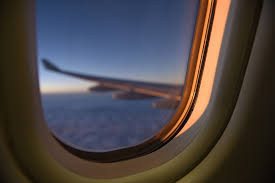Why Flight Attendants Ask to Keep Window Shades Open During Takeoff and Landing

IIE DIGITAL DESK :One of the most common instructions given by flight attendants before takeoff and landing is to ensure that all window shades are open. While it may seem like a minor or even arbitrary request, there are critical safety reasons behind this protocol, which is enforced by aviation authorities across the world. The practice plays a vital role in ensuring passenger safety and preparedness during what are statistically the most crucial phases of any flight.
Takeoff and landing are the times when an aircraft is most vulnerable to potential emergencies. In case of sudden issues such as aborted takeoff, hard landing, or even evacuation, open window shades allow both the cabin crew and passengers to visually assess outside conditions quickly. This includes spotting fire, debris, or water that could affect emergency evacuation decisions. A clear view outside helps crew members determine which side of the aircraft is safer for evacuation and which exits may be blocked or hazardous.
Moreover, having the shades open helps passengers' eyes adjust to the outside light conditions. If an emergency were to occur, passengers already accustomed to the natural lighting outside would be less likely to suffer from temporary vision impairment, especially if evacuation is required in daylight or low visibility conditions. This adjustment could save precious seconds in an emergency.
Window shades also help ground personnel, like rescue teams, to see inside the aircraft. In case of an accident during takeoff or landing, first responders can quickly assess the situation by looking through the windows to identify passengers and determine the severity of the incident.
Airlines and safety experts emphasize that these small instructions contribute to overall flight safety. So the next time you're asked to raise your window shade, remember it’s more than a routine — it's a simple act that can make a big difference in an emergency.
You might also like!














